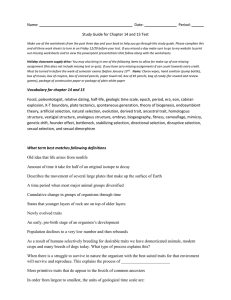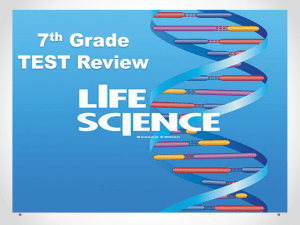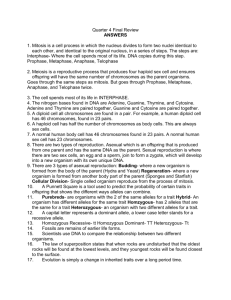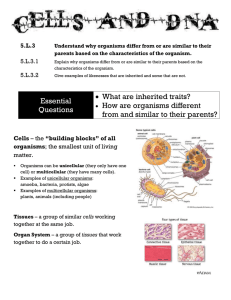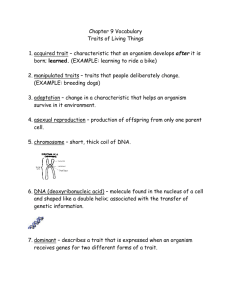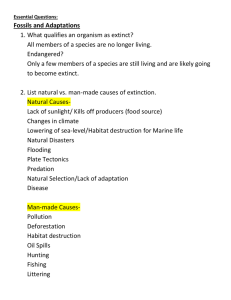Unit 1. The Microscope
advertisement
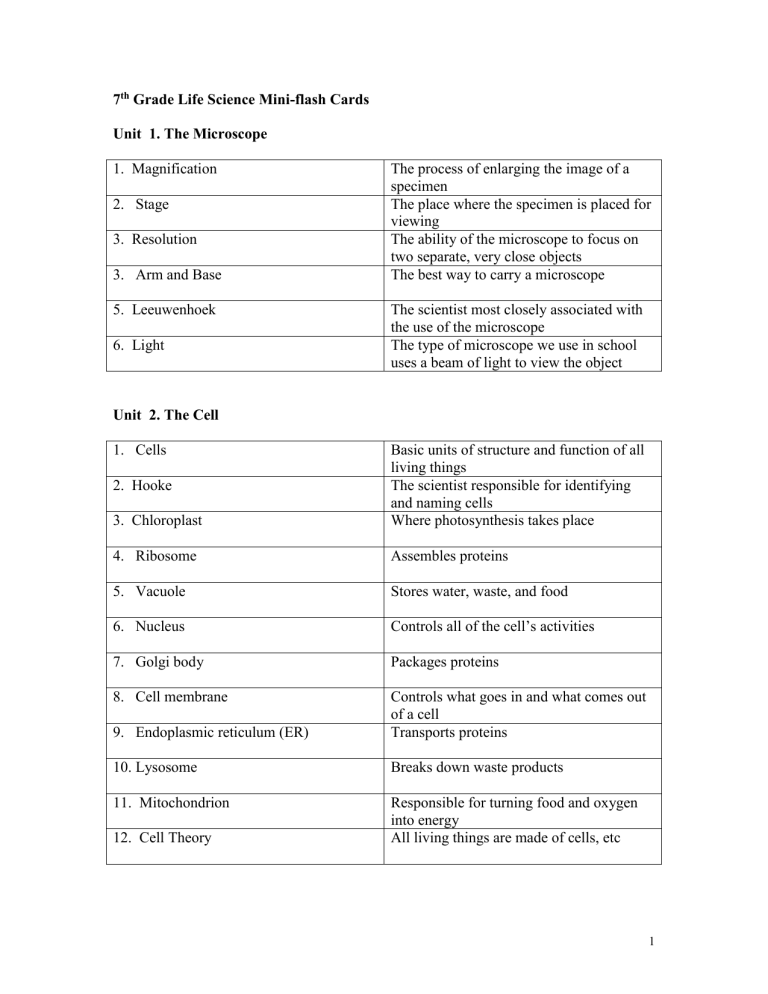
7th Grade Life Science Mini-flash Cards Unit 1. The Microscope 1. Magnification 2. Stage 3. Resolution 3. Arm and Base 5. Leeuwenhoek 6. Light The process of enlarging the image of a specimen The place where the specimen is placed for viewing The ability of the microscope to focus on two separate, very close objects The best way to carry a microscope The scientist most closely associated with the use of the microscope The type of microscope we use in school uses a beam of light to view the object Unit 2. The Cell 1. Cells 3. Chloroplast Basic units of structure and function of all living things The scientist responsible for identifying and naming cells Where photosynthesis takes place 4. Ribosome Assembles proteins 5. Vacuole Stores water, waste, and food 6. Nucleus Controls all of the cell’s activities 7. Golgi body Packages proteins 8. Cell membrane 9. Endoplasmic reticulum (ER) Controls what goes in and what comes out of a cell Transports proteins 10. Lysosome Breaks down waste products 11. Mitochondrion Responsible for turning food and oxygen into energy All living things are made of cells, etc 2. Hooke 12. Cell Theory 1 Unit 3. Cell Transport 1. Diffusion 2. Osmosis Molecules move from an area of higher to lower concentration Water diffuses through a membrane 3. Active transport Requires a cell to use energy Unit 4. Cell Processes 2. Water, carbon dioxide, energy Food making process of autotrophs – using water and carbon dioxide End products of cellular respiration 3. Glucose and oxygen End products of photosynthesis 4. Cellular respiration Energy producing process - Breaking down food molecules to release energy Water and carbon dioxide (+ light and chlorophyll) Glucose and oxygen 1. Photosynthesis 5. Raw materials of photosynthesis 6. Raw materials of cellular respiration 7. Complementary Opposite processes; the end products of one are the raw materials of the other Unit 5. Cell Cycle 1. Cell division Entire cell divides to form two exact copies 3. Mitosis Division of the nucleus during cell division 4. Replication DNA makes a copy of itself 5. Cancer Cell division out-of-control 6. Treatments for Cancer Surgery, chemotherapy, radiation 2 Unit 6. Introduction to Genetics 1. Mendel 2. Traits The scientist who discovered the basic foundations of genetics Inherited features or characteristics 3. Gene A section of DNA 4. Allele A different form of a gene 5. Dominant 7. Phenotype An allele whose trait always shows up when present An allele whose trait is masked by the dominant trait Physical appearance of an organism 1. Genotype Genetic make up of an organism 2. Chromosomes Rod-shaped bundle of DNA 3. Watson, Crick, and Wilkins Discovered the structure of DNA 4. Homozygous Both alleles for a trait are the same 5. Heterozygous Both alleles for a trait are different 6. Inbreeding Crossing two individuals with similar or identical traits Crossing two individuals with different traits to get the best of both parents 6. Recessive 7. Hybridization 3 Unit 7. Modern Genetics 1. Genetic Engineering Transferring a gene from one organism to another 2. Cloning 4. Sex chromosomes Producing an organism identical to the one from which it was produced Chart that tracks which members of a family have a particular trait X&Y 5. Sex cells Gametes (egg & sperm) 6. Fertilization The process by which a sperm cell fuses with an egg cell 1. Zygote Fertilized egg 2. Karyotype A photograph of chromosomes from one cell used to look for genetic disorders Condition inherited through abnormal genes or mistakes on chromosomes Disorder caused by an extra 21st chromosome 3. Pedigree 3. Genetic disorder 4. Down syndrome 5. Amniocentisis 6. Genome Technique used to analyze fluid around a developing baby for genetic disorders All of the DNA/genes in one cell Unit 9. Evolution Variation Natural selection Any differences between individuals of the same species The means by which evolution occurs Evolution Change is a species over time Adaptation A special feature or trait an organism has that helps it survive in its environment Scientist most associated with the Theory of Evolution Traits that can be acted on by natural selection Darwin Inherited traits Role of genes in evolution Fossils Only traits that are controlled by genes can be acted upon by natural selection The preserved remains or traces of organisms that lived in the past 4 How are most fossils formed? How do new species form? How organisms are grouped? Needs of living things Embryology Homologous structures Extinct Relative dating Absolute dating Gradualism Punctuated equilibria What do homologous structures show? Evidence of evolution Geologic Time Scale Precambrian Time Branching tree The most common fossils are formed when they are buried in sediment. A group of organisms are separated from other members of their species Whether or not they have a nucleus, make their own food, are single or multi-cellular Energy source, water, living space, stable internal environment The study of organisms before their birth Body parts that are similar in design by used for different purposes (whale fin/human arm/dog leg) A species that does not have any living members A dating method that is used to show which of two fossils is older. A dating method used to determine the actual age of a fossil The theory that proposes that evolution occurs steadily in tiny changes over long periods of time The theory that proposes that species evolve during sort periods of rapid change Body parts that are structurally similar in related species provide evidence that the structures were inherited from a common ancestor 1.Homologous structures, 2. Similar appearance in embryos, 3.Similar protein and DNA sequences, 4. fossils The calendar of Earth’s history The largest span of time in the Geologic Time Scale A diagram that shows how scientists think different groups of organisms are related 5
